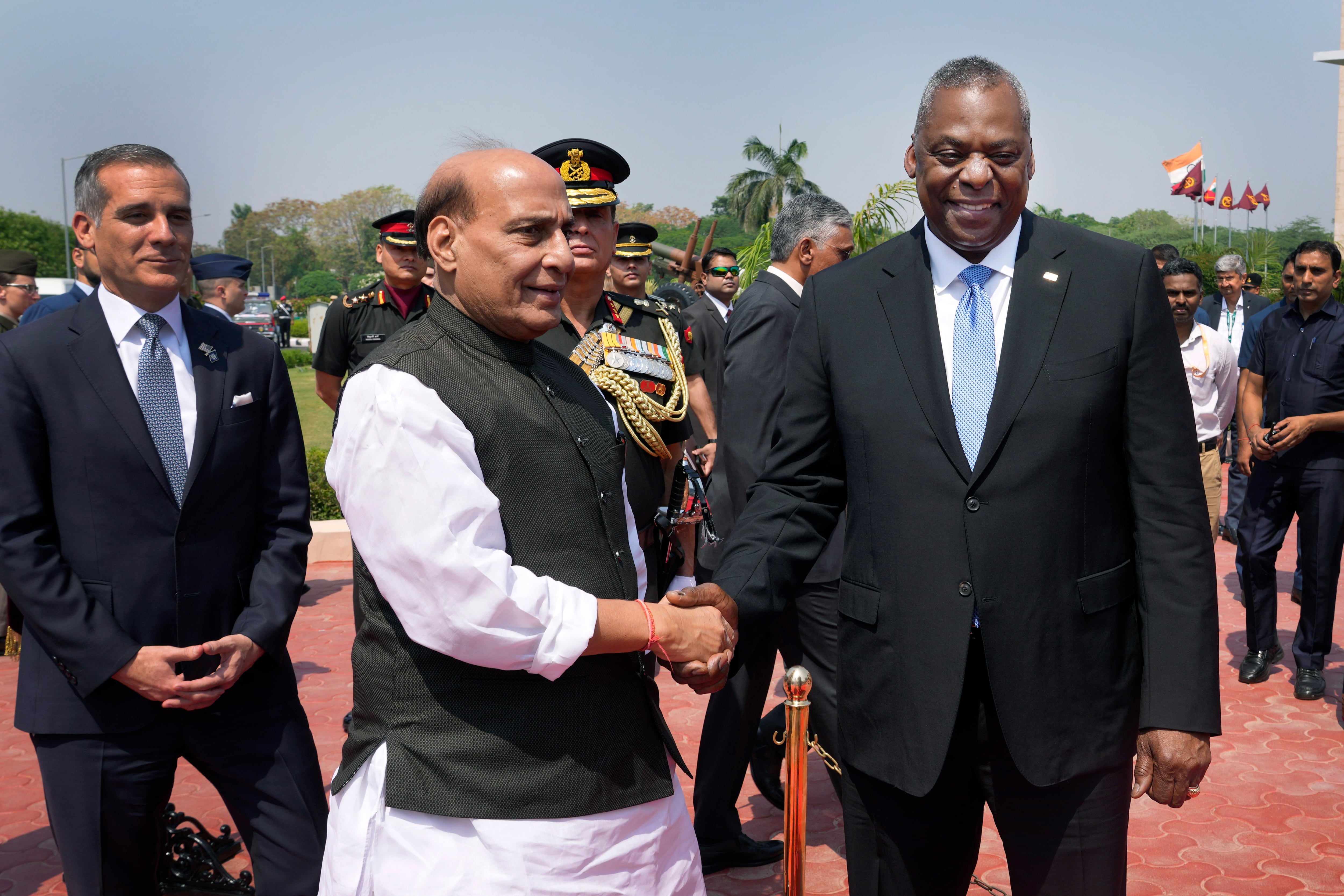WASHINGTON — U.S. and Indian defense officials announced the creation of a joint technology accelerator aimed at increasing collaboration and interoperability between the two nations.
The countries unveiled the India-U.S. Defense Acceleration Ecosystem, dubbed INDUS-X, during a June 21 summit hosted by the U.S. Chamber of Commerce. The effort provides a pathway to funnel technology developed by startups and other commercial companies into U.S. and Indian defense agencies.
The announcement comes Indian Prime Minister Narendra Modi visits the U.S. this week, seeking to strengthen ties between the two countries.
“INDUS-X provides a mechanism to drive change,” Deputy Undersecretary of Defense for Acquisition and Sustainment Radha Iyengar Plumb said during a speech at the summit. “This forum can leverage not only government-to-government collaboration, but also robust and dynamic private sectors in both countries. . . . Fundamentally, it’s all about forming connections between our innovators and entrepreneurs.”
The Indian Ministry of Defense’s Innovations for Defense Excellence organization and the Office of the Secretary of Defense at the Pentagon are leading the initiative.
India’s MoD has set a goal of increasing its annual exports to $5 billion by 2025, and the agency views co-development and co-production with the U.S. as one means for achieving that target. The U.S., meanwhile, wants to strengthen relationships in the Indo-Pacific region and views the country as a key partner.
The creation of INDUS-X is one of several joint technology initiatives between the two nations in recent years. Last year, President Biden and Modi announced the creation of the U.S.-India Initiative on Critical and Emerging Technology, under which the leaders agreed to cooperate on their development of high-need defense technologies.
In April, India’s Defense Minister Rajnath Singh and U.S. Defense Secretary Lloyd Austin signed an agreement to share space domain awareness data and made plans for more space information exchanges this year.
Earlier this month, the two countries established a joint roadmap that identifies five high-priority opportunities for cooperation – air combat, ISR, logistics, undersea domain awareness and munitions. As part of that roadmap, leaders agreed to work together to address policy and industrial base concerns “of mutual interest” and to seek to make India a logistics hub for the U.S. and other partners in the Indo-Pacific region.
Within INDUS-X, the two military departments will establish mentor-protégé opportunities between U.S. and Indian defense firms and startups, Plumb noted.
“These connections will help enable the production of Indian-built components that can expedite some of the [foreign military sales], and they will also support diversification in both nations’ industrial bases, while signaling enduring investments in the startup firms,” she said.
Along with partnerships between startups of established defense companies, the initiative also seeks to create “pipelines” between those companies and research and development organizations and universities.
INDUS-X will also create an accelerator program for defense industry newcomers and establish partnerships between academia and industry. Further, India and the U.S. will “explore options” to co-fund support for deep-tech defense startups, whether through public-private partnerships or through connecting companies with venture capital firms and investors in India.
“Not only will this stimulate direct investment into promising technologies and ideas, but it will also create a network to share best practices on leveraging private capital to support production at scale for critical military capabilities,” Plumb said.
INDUS-X also provides a venue for the countries to work through barriers policy barriers like U.S. export control laws and identify “concrete areas of change” to address those bureaucratic hurdles, she said.
Plumb and other DoD officials, including Air Force Secretary Frank Kendall, emphasized during the summit that the relationship between the U.S. and India is built on “shared values” of peace and security in the Indo-Pacific and a “free and open region.”
Those comments come as human rights organizations highlight growing concern about press freedom in India. Amnesty International, the Committee to Protect Journalists and Reporters Without Borders have cited multiple incidents of media suppression in recent years.
Last month, Indian authorities arrested longtime Defense News correspondent Vivek Raghuvanshi and accused him of espionage. Leadership at Sightline Media Group, which publishes Defense News, said they have not seen evidence to substantiate the charges.
Jaime Moore-Carillo contributed to this report.
Courtney Albon is C4ISRNET’s space and emerging technology reporter. She has covered the U.S. military since 2012, with a focus on the Air Force and Space Force. She has reported on some of the Defense Department’s most significant acquisition, budget and policy challenges.






